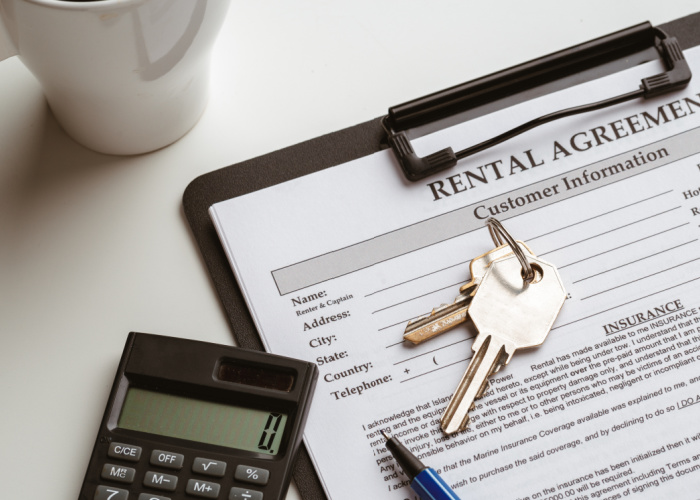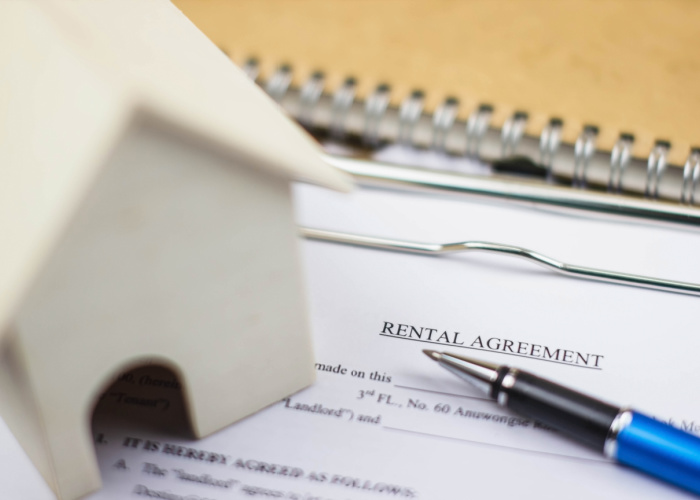If you’ve been hearing about DWP PIP back payments and wondering if you might be…

What Does PCM Mean Rent? Your Guide to Rental Terms
Want to know more about PCM rent? Well, we’ve got you covered. In this guide, we’re going to tell you everything you need to know about PCM rent, how it’s calculated, its effects on budgeting, the advantages it offers, the commitments it entails, and when alternative payment frequencies might be preferable.
Key Takeaways
- Learn About PCM Rent: Discover what PCM (per calendar month) rent means in the UK rental market, how it’s calculated, and its benefits for easy budgeting and consistent payment schedules.
- Understand Your Rental Agreement: Get to know the key terms of PCM rental agreements, including payment dates, what’s included in your rent, and the notice period for vacating a property.
- Explore Payment Options: Find out when it might be better to opt for weekly payments over PCM and how different payment frequencies can suit your financial and lifestyle needs.

PCM: What It Stands for in the Rental Market
PCM stands for ‘per calendar month’. It’s a common practice in the UK housing market to set rental periods on a monthly basis. This approach provides consistency and clarity for both tenants and landlords.
Breaking Down PCM Rent
How is PCM rent calculated? Typically, landlords establish a consistent monthly payment rate by dividing the total annual rent by 12 months. When starting from a weekly rent figure, the monthly cost is determined by multiplying the weekly amount by 52 weeks and then dividing by 12 months. This ensures fairness and clarity for tenants, as the monthly payments remain equal, regardless of the varying lengths of different months.
The Benefits of Paying Rent PCM
Paying rent PCM brings several benefits. It provides budgeting consistency, which is advantageous for both tenants and landlords. The ‘payday’ is on the same day of the month, promoting financial consistency and convenience.
Additionally, PCM agreements offer the ease of setting up automatic bank transfers, simplifying the monthly rent payment process.
PCM vs PW: Choosing Your Payment Frequency
PCM rent is due once per calendar month, while PW (per week) rent is due every week. In choosing between PCM and PW, consider scenarios where one payment frequency may be more beneficial.
Weekly rent agreements are often chosen by short-term tenants such as university students or seasonal workers. The PCM rent option provides a more direct approach for individuals with consistent monthly earnings, making it easier for them to pay PCM rent. This makes it well-suited for most PCM rental agreements, especially for long-term rental arrangements with rented pcm properties.

The Monthly PCM Agreement: What Tenants Need to Know
Tenants should be aware of the monthly PCM rent payment date and what is included in the rent. Having a set date each month for PCM rent payment ensures consistency and predictability for both tenants and landlords, which benefits those in long-term leases by preventing the financial pressure of paying for two properties during the moving process.
Setting the Monthly Date
PCM rent is collected on the same date each month. This predictable schedule is crucial for both the tenant and landlord. The due date is typically aligned with the date the tenant began occupancy, making it easy to remember. Tenants can negotiate with landlords or agencies to adjust the payment dates to suit their income schedules.
But remember, changing the rent payment date may require an adjusted rent amount covering the gap period between the old and the new payment dates.
Inclusions in Your PCM Rent
While PCM rent covers the cost of the property, it may also include additional expenses such as bills. It’s essential for tenants to verify and clarify the inclusions in the PCM rent before finalising the rental agreement.
This understanding helps in budgeting and avoiding any unexpected costs down the line.

Rental Agreements: Key Terms Explained
Understanding key rental agreement terms like the notice period and household bills is crucial for any tenant. Paying the first month’s rent upfront is a common practice to secure the landlord’s financial position and affirm the tenant’s dedication to the lease. Regularly paying rent late can lead to tensions in the tenant-landlord relationship, potentially affecting the terms of tenancy and overall living conditions.
PCM rental agreements offer tenants the advantage of having a stable living environment, diminishing the need for frequent moves and enabling them to personalise the property to feel like home. Additionally, pcm rent includes certain benefits that make it a popular choice among renters.
Understanding the Notice Period
The notice period is a crucial term in rental agreements. It refers to the timeframe that a tenant is required to provide to the landlord before vacating the property. The duration of notice required depends on the type of tenancy agreement and any specific terms it includes.
For periodic tenancies, tenants have the flexibility to end their tenancy at any time by providing the landlord with the agreed-upon notice period. Typically, for PCM rent, this often correlates to a month’s notice.
Household Bills and PCM Rent
PCM rent typically does not cover additional living expenses, leaving tenants responsible for managing these costs separately. Common household bills such as water, gas, and electricity are often excluded from PCM rent, necessitating additional monthly budgeting by tenants.
Understanding that PCM rent only covers the property rent can help tenants avoid financial surprises by budgeting for utilities and other non-included services in advance.

How Landlords Calculate PCM Rent
Landlords calculate PCM rent by considering annual expenses, the length of the rental agreement, and potential adjustments for irregular months. They divide the property’s annual rent by 12 months or multiply the weekly rent by 52 weeks and then divide by 12 months for the monthly rate. Annual expenses such as property insurance, council taxes, and predicted maintenance costs are factored in.
Tenants who offer to pay several months of rent upfront may negotiate a lower PCM rate with their landlord. The length of a rental agreement can also influence a landlord’s decisions regarding PCM rent adjustments to accommodate for longer-term factors such as inflation and maintenance cost increases.
Annual Lease Considerations
The monthly PCM rent for an annual lease agreement is calculated by dividing the total annual rent by twelve. This annual lease structure ensures that the total rent cost is evenly distributed across all months, despite the number of days in the month.
While monthly PCM payments remain consistent in an annual lease, the daily rate actually varies because months have different numbers of days, leading to tenants potentially paying more per day in February and less in months with 31 days.
Adjustments for Irregular Months
The PCM rent remains consistent even in months that are longer or shorter than the average. For leap years, a special formula that averages the days over a 4-year period may be utilised to calculate consistent monthly PMC payments, taking into account the additional day in February.
The standard practice for annual rental agreements is to divide the total annual rent by 12, which results in a slightly higher effective daily rate for shorter months when the PCM rent is spread evenly over the year. PCM rent charges are based on an assumed rental period of 30 days, ensuring consistency and ease of understanding for tenants.

The Impact of PCM Rent on Budgeting
PCM rent impacts budgeting by aligning with the monthly salary schedules of most tenants in the UK, providing a predictable payment structure. When budgeting for PCM rent, it is crucial to account for the total monthly cost, which may encompass not only the rent but also additional expenses such as utilities and insurance.
Budgeting for Monthly Payments
To budget effectively for PCM rent payments, tenants must first be clear about the total monthly rent amount they’re obligated to pay. Tenants should proactively reserve the calculated monthly rent in their budget regularly to prepare for the upcoming payment date. The utilisation of direct debits can aid tenants in ensuring rent is paid punctually each month without the need for manual remembrance.
Avoiding Financial Surprises
PCM rent typically does not cover additional living expenses, leaving tenants responsible for managing these costs separately. Common household bills such as water, gas, electricity are often excluded from PCM rent, necessitating additional monthly budgeting by tenants.
Understanding that PCM rent only covers the property rent can help tenants avoid financial surprises by budgeting for utilities and other non-included services in advance.

Alternatives to PCM: When Weekly Agreements Make Sense
Weekly rent agreements offer a payment frequency alternative to the traditional PCM (per calendar month) that some tenants may find appealing. Tenants with unconventional work patterns, such as seasonal workers, often experience fluctuating incomes which can make weekly payments more manageable.
The flexibility of a weekly rent cycle aligns better with the earning patterns of seasonal employment, allowing tenants to adjust their budgeting on a more frequent basis.
The Flexibility of PW Agreements
Weekly payments offer flexibility for tenants as they can pay their rent in smaller increments, which can be easier to manage financially. Weekly rent agreements offer tenants the ability to adapt more easily to changes in their living situation, which is advantageous for those who may need to relocate frequently for work or personal reasons.
Comparing Costs: Weekly Total vs. PCM Rate
Multiplying weekly rent by four to derive a monthly rate can result in inaccuracies since not every month equates to exactly four weeks. The total cost incurred from weekly rent payments can vary from pcm rates, thus influencing the decision-making of tenants based on their financial circumstances.
Choosing weekly rent payments may be more manageable for tenants who receive their income on a weekly basis, affecting their preference for a payment frequency that aligns with their budgeting.

PCM Rent and Long-Term Commitments
Long-term leases with PCM arrangements provide tenants with the stability of a predictable payment schedule, as rent is typically due on the same day each month. PCM rental agreements normally involve fixed monthly payments, which help tenants predict their housing costs and assist in financial planning.
Fixed-term tenancies have the following characteristics:
- Tenants are required to pay rent for the entire term
- Rental prices are fixed for the duration of the tenancy
- Long-term commitments are required, unless there is a break clause present
If tenants need to end their fixed-term tenancy early and there’s no break clause, they must negotiate with the landlord to surrender the tenancy. This could affect the stability of housing and financial planning.
The Stability of Long-Term Leases
Long-term leases provide a stable living arrangement conducive to long-term planning and peace of mind for tenants. Fixed pcm agreements in long-term leases assure tenants of consistent rental amounts, thus facilitating household budgeting and financial planning. Such leases offer tenants protection against frequent moves, thereby granting them a sense of security and continuity.
For landlords, long-term pcm leases mean predictable, steady income streams with fewer vacancies and less frequent tenant search and acquisition costs. PCM agreements underscore the stability of long-term leases, benefiting both parties through a mutually agreed-upon framework for housing costs.
Project Cycle Management for Property Rentals
Project Cycle Management (PCM) is a principle that, when applied to property rentals, aids in the systematic planning and execution of long-term rental agreements. Landlords can achieve greater efficiency and smooth operation during the lifecycle of rental agreements by utilising PCM principles.
PCM means helping landlords anticipate and manage challenges in long-term property rentals, ensuring adaptability in the face of unforeseen changes and tenant needs for flexibility.

Final Thoughts
We’ve covered the ins and outs of PCM rent, from its calculation to its impact on budgeting, and explored its benefits, long-term commitments, and alternatives. Understanding these aspects can help tenants make informed decisions and approach the rental market with confidence.
FAQs
What does PCM stand for in rent?
PCM stands for “per calendar month” and signifies how often rent payments are made, typically on a monthly basis. It’s a common term used in rental agreements.
How is PCM rent calculated?
To calculate PCM rent, divide the total annual rent by 12 months, or if starting from a weekly rent figure, multiply the weekly amount by 52 weeks and then divide by 12 months. Hope that helps!
What are the benefits of paying rent PCM?
Paying rent PCM offers budgeting consistency, a predictable payment schedule, and the convenience of automatic bank transfers. It’s a great way to stay on top of your expenses.
What should tenants know about the monthly PCM agreement?
Make sure to note that PCM rent is usually due on the same day every month and clarify what’s included in the rent before signing the agreement. This way, you’ll avoid any surprises down the line.
How can Project Cycle Management (PCM) be applied to property rentals?
You can apply PCM principles to effectively plan and manage long-term rental agreements, which can help landlords handle challenges in property rentals.


